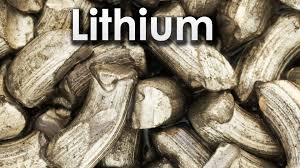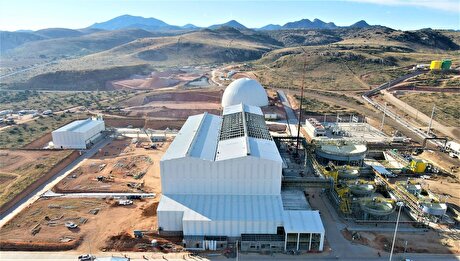
This is the only chart lithium price bears need see

Morgan Stanley said Chilean low cost brine producers SQM and Albemarle alone could bring 200kt per year by 2025 and after adding new and expansion hard-rock projects in Australia and China half a million extra tonnes per year could be available. Consider that global supply last year totalled just over 200kt.
Orocobre prides itself on being the first brine lithium producer to go into production in more than 20 years
The negative assessment raised eyebrows in the industry with executives criticizing the New York bank for underestimating the rise in demand, the complex nature of lithium mining leading to production ramp-up problems, and bottlenecks with processing of battery-grade lithium compounds.
A report released this week by Canaccord Genuity is much more sanguine about the outlook for the battery raw material. The Canadian financial services firm also predicts a rush of new tonnes hitting the market, but expects most of the new supply to come from higher-cost hard rock mines producing lithium concentrate or ore. The firm now sees surpluses only arising in 2020 and only if converter capacity can catch up with mine supply.
Interestingly, both Morgan Stanley and Canaccord in their respective reports reproduced a nearly one-year old graph about lithium mine supply from an investor slide presentation by Orocobre which prides itself on being the first brine lithium producer to go into production in more than 20 years.
The slide shows just how wide the gap between supply forecasts and reality can be. And in a bit of delicious irony, Orocobre's Olaroz operation has become the poster child for just how long it can take to bring a lithium project into full production (7 years in this instance):


Trump weighs using $2 billion in CHIPS Act funding for critical minerals

Electra converts debt, launches $30M raise to jumpstart stalled cobalt refinery

Codelco cuts 2025 copper forecast after El Teniente mine collapse

Barrick’s Reko Diq in line for $410M ADB backing

Abcourt readies Sleeping Giant mill to pour first gold since 2014

SQM boosts lithium supply plans as prices flick higher

Pan American locks in $2.1B takeover of MAG Silver

Nevada army depot to serve as base for first US strategic minerals stockpile

Viridis unveils 200Mt initial reserve for Brazil rare earth project

Kyrgyzstan kicks off underground gold mining at Kumtor

Kyrgyzstan kicks off underground gold mining at Kumtor

KoBold Metals granted lithium exploration rights in Congo

Freeport Indonesia to wrap up Gresik plant repairs by early September

Energy Fuels soars on Vulcan Elements partnership

Northern Dynasty sticks to proposal in battle to lift Pebble mine veto

Giustra-backed mining firm teams up with informal miners in Colombia

Critical Metals signs agreement to supply rare earth to US government-funded facility

China extends rare earth controls to imported material

Galan Lithium proceeds with $13M financing for Argentina project

Kyrgyzstan kicks off underground gold mining at Kumtor

Freeport Indonesia to wrap up Gresik plant repairs by early September

Energy Fuels soars on Vulcan Elements partnership

Northern Dynasty sticks to proposal in battle to lift Pebble mine veto

Giustra-backed mining firm teams up with informal miners in Colombia

Critical Metals signs agreement to supply rare earth to US government-funded facility

China extends rare earth controls to imported material

Galan Lithium proceeds with $13M financing for Argentina project

Silver price touches $39 as market weighs rate cut outlook

















